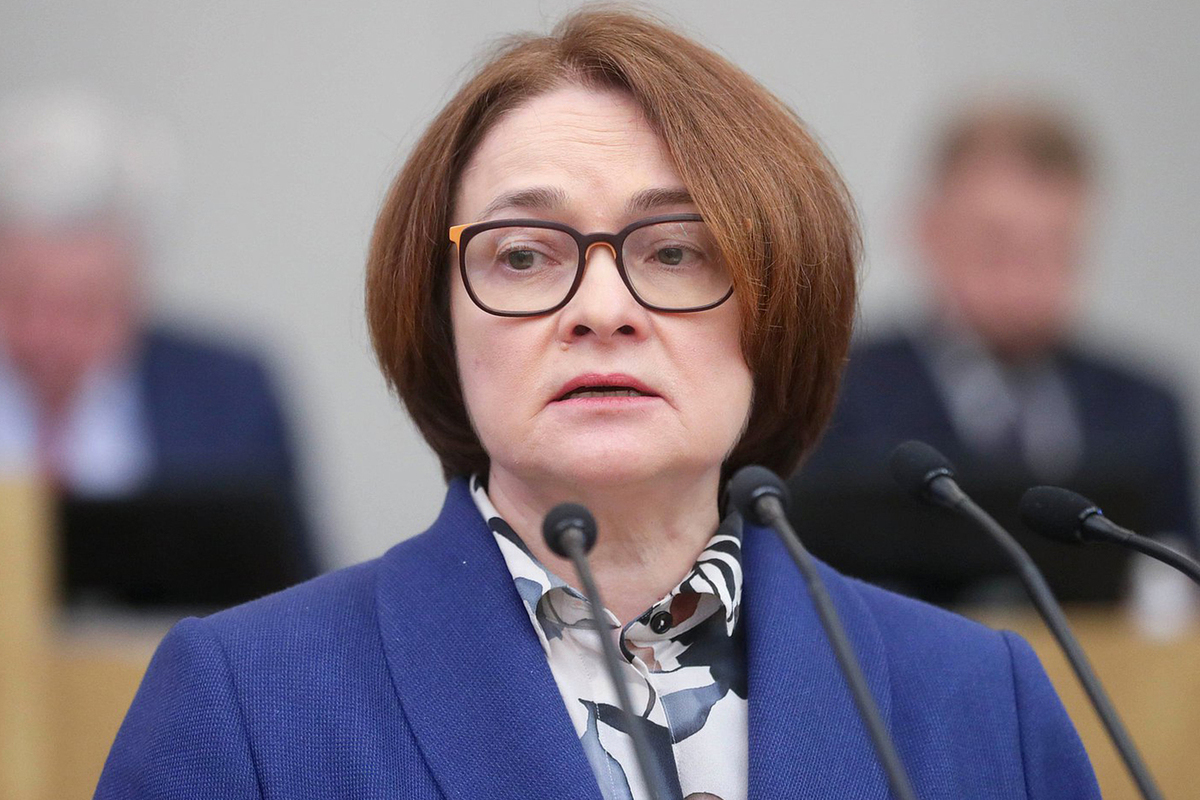Elvira Nabiullina told deputies about the achievements of the Central Bank over the past year
[ad_1]

The meeting with the deputies of Elvira Nabiullina, who spoke at the State Duma with her annual report for 2023, went surprisingly calmly. This time there was no tension hanging in the air and no emotions without which not a single visit to the lower house of the chairman of the Central Bank had previously been possible. However, Nabiullina still found opponents, but their few voices dissolved in the atmosphere of general benevolence and tranquility.
Here are the main points of the report by the head of the Central Bank: the Russian economy continues to grow at a high rate (at the end of 2023 – by 3.6%), and the high key rate does not in the least prevent it from doing so; the peak of inflation has passed thanks to tight monetary policy, without which “inflation would have been well above 7.4%”; a high rate protects the real incomes of citizens and contributes to the fight against poverty; the influx of funds into bank deposits continues; in the first quarter it amounted to almost 2 trillion rubles; Over the past two years, the share of mortgages issued to citizens with a large debt load has increased by one and a half times.
Against this background, the shortcomings were almost inaudible. Unless the regulator intends to discuss with the deputies additional measures to combat telephone and Internet scammers, since it was not possible to achieve a turning point – “we are hitting the tails.” Nabiullina also voiced specific initiatives of her department: the Central Bank proposes to increase insurance for long-term deposits from three years to 2 million rubles from the current 1.4 million, and for irrevocable certificates – to 2.8 million rubles. The Bank of Russia also allows a new reduction in the rate ceiling on MFO loans from the current 0.8% per day.
Nabiullina’s current speech in the State Duma, with its kindness, sharply contrasts with what the head of the Central Bank spoke about at a meeting with journalists on February 16. Now the problems were discussed in passing (the emphasis was on successes), then – in an expanded and emphasized manner. In particular, two months ago Nabiullina mentioned the following risks: inflationary pressure remains high; domestic demand continues to significantly outstrip the possibilities for expanding the production of goods and services; The shortage of labor resources remains the main limitation for further production growth.
In principle, little has changed since then. According to Rosstat, inflation in April amounted to 0.38% after 0.37% in March, 0.46% in February and 0.84% in January. In the first four months of the year, prices in the country increased by 2.06%. The dollar exchange rate during trading on the Moscow Exchange on April 9 exceeded 93 rubles for the first time since March 25. Negative internal factors continue to put pressure on the Russian currency: increased demand for imports, including due to increased state budget expenditures, as well as a high volume of capital flows abroad. Plus – logistics in trade with Asia are becoming more expensive.
The financial authorities clearly do not understand what to do with the debt burden of the population, which last year jumped by 6.4 trillion rubles to 34.8 trillion rubles. Which is comparable to the country’s annual budget revenues. And the problem, most likely, is not this gigantic figure, but that the ability of people to pay off their debts with banks is deteriorating. Today, individuals with three or more loans account for half of all retail loan debt. Back in 2022, the figure was less than 40%. The number of such individuals has increased by 2.7 million over the past year, from 25% to 28% of the total. Moreover, 60% of them are mortgage holders.
And here the following point is fundamentally important: if in Western countries the overpayment on a loan does not exceed 1-5% per annum, then in Russia, taking into account the high key rate of the Central Bank, it reaches 15-20% per annum. The banks are the winners, but not the people.
“You justify a high discount rate by saying that it has minimal impact on inhibiting economic growth, while at the same time slowing down inflation. However, the opposite is true: it has a minimal impact on curbing inflation, but it suppresses investment growth,” independent deputy Oksana Dmitrieva addressed Nabiullina from her seat, whose statement sounded not like a question, but like a remark.
“We see,” the head of the Central Bank answered briefly, “that monetary policy helps reduce inflation. This is important for the growth of real incomes of the population.”
Perhaps the only one among the parliamentarians who tried to sharpen the discussion and give it a conceptual character was Valery Hartung. Taking to the Duma podium, he said that although the Central Bank has undeniable achievements (the banking system has become resistant to sanctions, international payments are working, a national mechanism for fast payments has been created), the regulator “has done everything to kill economic growth.” According to Hartung, last year’s increase of 3.6% took place not thanks to the Central Bank’s policy, but in spite of it. With a key rate of 16%, borrowers can expect loans from 18% to 20%, which puts an end to the idea of investment. GDP grew exclusively thanks to industries that create products with maximum added value and ensure the country’s technological sovereignty.
However, the comments made by the deputy did not at all change the general friendly atmosphere in the State Duma hall. The report of the head of the Central Bank was accepted, the deputies and Nabiullina parted quite satisfied with each other.
[ad_2]
Source link






